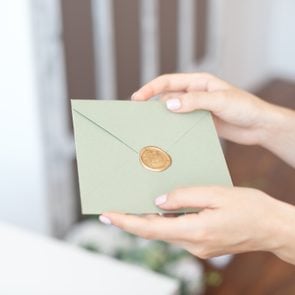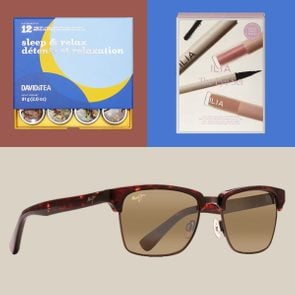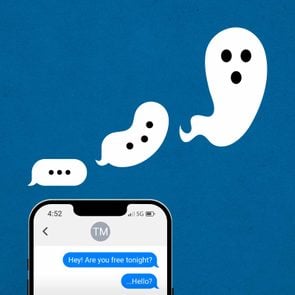What Is Business Casual? A Guide to Dressing for the Office
Updated: Feb. 22, 2024
Office wear today is far from the stuffy attire of the past, and once you know what business casual is, you can pull together the perfect look for the modern workspace
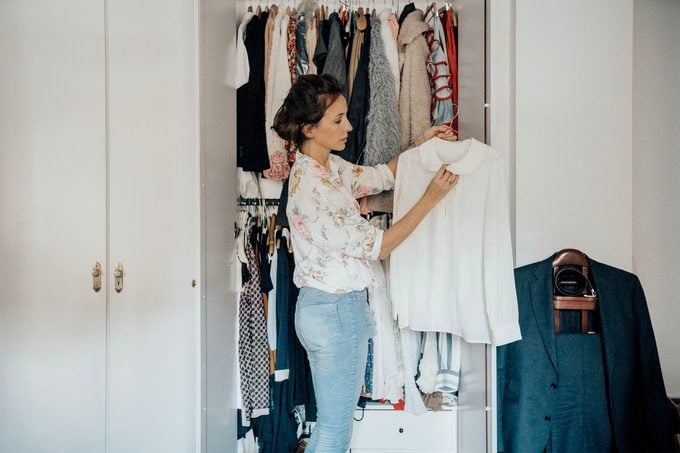
As workplaces have evolved, so too has office attire. Hybrid schedules and remote work have spurred an era of casual dressing that goes far beyond casual Fridays. Yet the informal shift doesn’t equate to an open invitation to wear just any old thing in your closet. And while the easygoing vibe is a nice new normal, it challenges us to redefine what is business casual in this current workspace environment. Afterall, no one wants to be underderssed.
“As the name indicates, it’s a more relaxed version of formal business wear,” says fashion advisor Alison Lumbatis, CEO of Outfit Formulas, an online personal-styling program. But those open boundaries mean that if we’re not careful, we can accidentally go too far. The question is, how can we be comfortable and stylish while maintaining the requisite professional appearance?
This isn’t solely about clothing either; it’s also a matter of etiquette. Business etiquette, digital etiquette, work-socializing etiquette, and company culture—all pose the challenge of sending the right message gracefully through the various fashion-behavior landscapes. “The old rule used to be, if you wore it to play, you shouldn’t wear it to work,” says Kat Griffin, founder and editor-in-chief of Corporette, who advises on how to dress for work and still look stylish. “But these days, a lot of clothing items that used to be included in this unspoken list, like sleeveless tops, jeans [and] sandals, can now be worn to many offices without seeming disrespectful.”
Part of success lies in understanding your office’s specific culture, the same way you need to learn the email etiquette, texting etiquette and Zoom etiquette rules, which can take some time and observation. Keep in mind that some offices have seemingly strange etiquette rules that take a moment to catch on to. With that in mind, Lumbatis and Griffin are here to offer general guidelines for an office environment that’s not too formal yet doesn’t entirely say anything-goes. They’re offering up advice on all the pieces you need and what not to wear under any circumstances, and they’re answering your pressing questions about today’s office dress code.
Get Reader’s Digest’s Read Up newsletter for more style, humor, cleaning, travel, tech and fun facts all week long.
What is a business casual dress code, exactly? How is it different that business formal?
Today, business casual should strike a balance between comfort, style and professionalism. It’s a delicate equilibrium that combines the traditional elements of business attire with the relaxed nature of casualwear. “I’d say one top rule is, clothing should fit properly,” says Griffin. “Too-tight pants or pants that are falling down aren’t going to be appropriate for any office.”
Additionally, while there is a higher degree of flexibility these days, and thankfully, there are many etiquette rules that changed in the past decade, there are still some very iffy outfit choices. Griffin suggests you skip anything that shows “unexpected skin.” This includes clothing with cutout details, midriff-baring tops, shorts or skirts that expose the upper thigh and excessive cleavage—and these rules go for both genders.
Determining what is business casual is about more than selecting office-appropriate clothing items. It’s also a matter of deciding what constitutes your self-representation. Sort out how to say yes to the pieces you feel really showcase who you want to be at the office (and how to say no to those that don’t).
“Really think about how you want to present yourself,” says Griffin. “If you’re creating a personal brand that should match what you want people to expect from your work, consider things like reliability, attention to detail, cleanliness and neatness, not ‘super cute.'” Your outfit is not just a combination of clothing items but a nonverbal communication of your work ethic, competence and professionalism.
Examples of business casual outfits for men – casual style
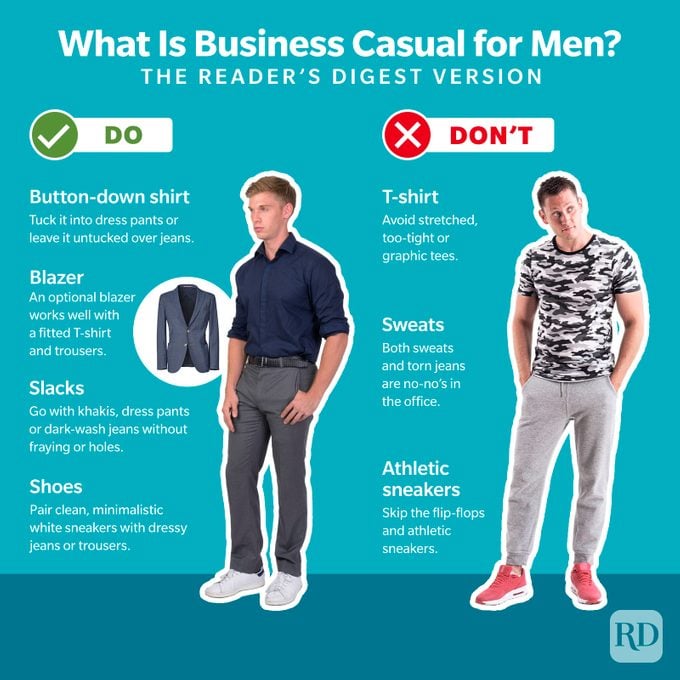
Yesterday’s obligatory daily suits are being replaced by a more personalized approach. But everyone makes mistakes while shopping for a work wardrobe. Thankfully, the fashion experts are here to guide you. The goal, they say, is to still project a professional image but with an individual style. This doesn’t mean all formal elements are discarded. Instead, they’re simply blended with casual pieces to create a refined yet relaxed look.
So what is business casual for men? The items below fit the bill and neutral colors are always in fashion.
The Business Casual Look
Sneakers
The rise of athleisure has given clean, simple sneakers a place in the office. Opt for a minimalistic white pair and make sure to keep them immaculate. With casual suits or slacks, they put a modern twist on traditional office wear.
Jeans
A pair of classic straight-fit jeans in a dark or medium wash can work well in a business-casual environment. The key is to ensure they’re in good condition—no fraying, rips or holes—and reach your ankles. Pair them with a button-down shirt for a smart, laid-back look.
Button-down shirts
Either tucked into dress pants or left untucked with jeans, these are classic-cool. The top two to three buttons can be left open if you’re not wearing a tie.
T-shirts
In certain offices, solid-color, well-fitted T-shirts are acceptable, especially when layered under a jacket. Just skip the graphics and elements like sports team logos. Your outfit can still be a conversation starter—but for the right reasons.
Khakis
Khaki pants and chinos are versatile, and when worn properly, they can work for the office without looking like weekend wear. Pair them with short- or long-sleeved button-downs to keep the look polished.
Trousers
Dress pants, particularly in a modern fit, are a safe and adaptable option. You can easily adjust the formality with your pick of shirt and shoes. For a more easygoing look, pair with a crisp solid T-shirt and clean sneakers; for something a bit more pro, go with a collar and loafers or leather shoes.
Jackets
Blazers and casual jackets are a great addition for a hit of cool sophistication. A sport coat, for instance, can effortlessly upgrade a basic pair of jeans. Choose a fit that’s comfortable (nothing too tight) and works with your body type. For instance, if you’re short, avoid long jackets.
More Ideas:
- Sweaters
- Polo Shirts
- Oxford Shirts
- Corduroy
- Vests
- Collard Shirts / Button Up Shirts
- Turtle Necks
- Casual Shoes
Examples of business casual for women
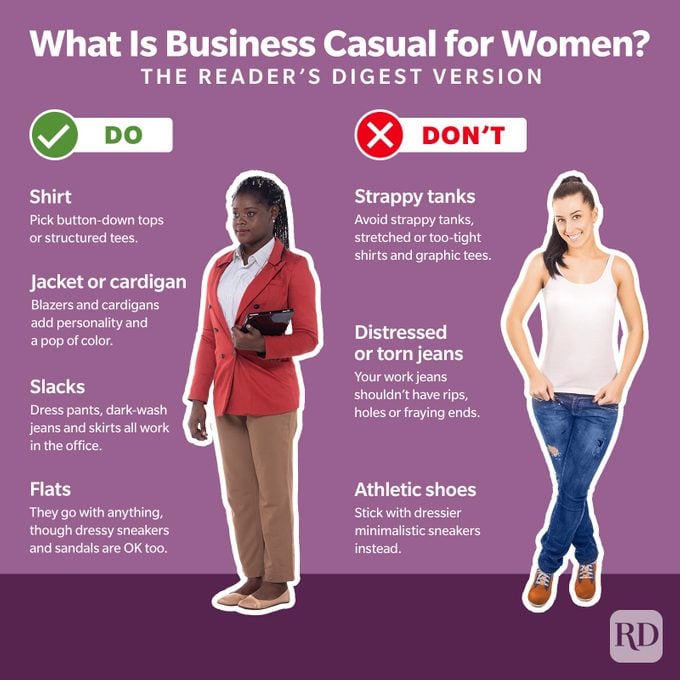
Thankfully, there’s a shift toward self-expression through fashion at work, eliminating the clone-like feeling of wearing corporate duds that every other woman is also wearing—totally vanilla skirt suits are out, for one. These items will keep you comfortable throughout your day while helping you look professional, sophisticated and stylish.
What is business casual for women? The following items all qualify.
Jeans
Dark wash always comes across as sophisticated and chic, and to elevate the look even more, go for a trouser-style or wide-leg cut. The key is to ensure they’re in prime condition, so avoid rips or excessive distressing. Jeans go great with feminine tops or solid T-shirts and structured blazers.
Sneakers
Pairing clean, simple sneakers with dresses and dress pants is a super stylish, modern look. Just avoid athletic sneakers and stick to anything solid or two-tone.
Flats
These will be your daily saviors. A comfortable pair of flats goes with pretty much anything, and you have options: Pick a neutral shade or a vibrant hue, or go bolder with a print. The same goes for low heels.
Sandals
When choosing sandals, go for styles that provide substantial foot coverage, maintaining the line between too-casual and professional.
Dresses
Dresses offer an excellent, fuss-free, one-and-done outfit. Sheath, A-line and midi styles offer the most versatility—they can be dressed up with a blazer or toned down with a cardigan or denim jacket, depending on your office environment.
Slacks
Ankle length or in a traditional trouser cut, slacks are absolute staples and totally worth the investment of stocking up on multiple colors. Try on a variety of styles and go for what you feel most comfortable (and most confident) in.
Skirts
Knee-length to midi skirts are as flexible as dress pants for the office. A pencil skirt works wonders with a printed blouse and neutral flat or heel for a reliable look for pretty much any situation.
Tops
Fitted button-down dress shirts will go with pretty much anything: pants, skirts, jeans, you name it. This is where you can bring out your personality, so take advantage. Depending on your personal style, you might go with prints, bold colors, neutrals, lace embellishments or details like tie-necks, ruffles or puffed sleeves.
T-shirts
These are a business-casual “yes”—but with caveats. Your tees need to be clean, structured (meaning they hold their shape and aren’t worn out) and solid or patterned, not blazed with graphic images. Adding a good T-shirt is a great way to tone down the dressiness of a suit.
As for athleisure tees, save those for exercise. And mind proper gym etiquette when you do wear them.
Jackets
Blazers, moto jackets and cardigans add personality and polish to any outfit, and they’re go-to layering pieces. Don’t shy away from patterned or brightly colored options; they’ll make your look pop more. Remember, business casual means dressing respectfully—it doesn’t mean blending into the background.
Business casual don’ts
Despite the relaxed rules, when it comes down to what is considered business casual, there are certain items that remain strictly off-limits at work. We’re all prone to etiquette mistakes, but these fashion flubs are easy to fix. Our experts say skip these to make sure your look is professional and your rep stays intact.
- Stretched-out T-shirts: These look sloppy, giving the impression that you don’t care about your personal appearance.
- Torn or distressed jeans: While jeans have made their way into the business casual realm, overly distressed or torn versions come across as too casual.
- Athletic shoes: Unless your office is extremely casual, avoid them. Super-sporty sneakers make it look like you’re ready to hit the gym rather than the office.
- Flip-flops: These are way too relaxed. Plus, no one wants to see that much of your feet.
- Spaghetti straps: These reveal too much skin for the workplace, and this goes for both men and women.
- Gym or yoga gear: Sports bras, leggings, shorts, sweats, workout tees, joggers—it doesn’t matter how cute or matching they may be. Save them for after work.
- Graphic or slogan tees: These can be distracting and potentially offensive. Avoid any clothing that could become a talking point for the wrong reasons. You don’t need to spend your time issuing apologies for your insulting outfits.
- Overly tight or baggy clothes: Both extremes come off as unprofessional. Clothing should fit well and flatter your shape without being too revealing or sloppy.
- Overly loud clothing and shoes: Things like faux-leather pants, slide sandals and clogs with wooden soles are all best avoided. These items can be seen as distracting, annoying or not fitting for a professional environment.
- Heavy perfume: If people can smell you from more than a foot away, consider toning down the amount of perfume you use. And yes, when a co-worker breaks this social rule, you have every right to complain nicely.
- Anything with wear and tear: Clothes with stains, holes, missing buttons, tons of pilling or a layer of pet hair signal a lack of attention to detail and can detract from your overall professional image.
FAQs
Still stumped by how to create a work-appropriate wardrobe or wondering, What is business casual attire supposed to look like in certain situations? The pros are answering some of your most commonly asked questions.
How do I look more formal if I work in a conservative setting?
If your office is conservative but not formal enough to require you to wear a two-piece suit daily, then a button-down shirt and tie with dress shoes is a safe outfit for men. For women, pants or a skirt with a button-down shirt or blouse and neutral flats can be your staples.
I have a very creative job. Just how casual can I get?
“Be sure to ask during the hiring process, and use your co-workers’ attire for clues,” says Lumbatis. “You want to catch on to any essential social etiquette secrets. In creative careers, it’s fun to show your personality through interesting cuts; bright, bold colors; patterns and styles that are a little outside the box.”
What’s a great go-to outfit for a job interview?
“You can never go wrong with a formal professional two-piece suit [for women, either a pant or skirt suit], white or light blue button-down and dress shoes or sleek flats with minimal accessories,” says Lumbatis. Feeling like you’re wearing a smart outfit that isn’t off-brand will keep your brain focused when figuring out what to say in an interview.
Should I dress up more when I have a meeting with my boss?
It doesn’t hurt! “Looking more polished does help you show up as the best version of yourself and gives your confidence a boost, especially if you have a presentation or an important meeting,” says Lumbatis.
What’s an easy way to look more pulled together when I have an important meeting or presentation?
“I always advise people to have a blazer in the office so they can grab it for more formal events. For women, if you want to scale up even more, you can throw on pointy-toed flats or low heels, if you wear them,” says Griffin.
Feeling great in your outfit translates to a stronger performance because not only are you confident, but you’re also not distracted by worrying whether you look the part you want to play in the company. And in these situations, you need to focus. We all know it’s not easy to find the perfect thing to say, so anything that helps is worth pursuing.
Should I dress differently if I’m going for a promotion?
“Absolutely! You’ve heard the saying to dress for the part you want, not the part you have,” says Lumbatis. “Plus, research proves that how we dress has an effect on how we feel and show up in the world. Looking sharp helps you stay strong when deciding how to ask for a raise, for instance, or a promotion. Take in how your higher-ups dress, and use that as a cue.”
If I can’t quite read the office yet, how creative and casual can I dare to go?
“You want co-workers, bosses and clients to think about your work first. It’s OK to express yourself and show your personality, but remember that what you wear reflects immediately on how people perceive you as a professional,” Griffin points out. Give yourself three weeks of wearing more conservative clothing while observing, then make adjustments that feel more freeing and comfortable.
Do the rules for what is business casual loosen in the summer?
“Yes and no,” says Griffin. “I think unexpected skin is still not OK, even when it’s hot out.” That said, this is a time when thinner or flowier fabrics are acceptable, pants that end above the ankle to mid-calf are cool, and you can lose the jacket.
More From Etiquette:
- How Much to Tip Hairdresser
- Tips for Hotel Housekeeping
- How Much to Tip
- How Much to Tip for a Massage
- Small Talk Etiquette
- How to Host a Party
- Table Manners & Dining Etiquette
- Proper Etiquette
- Wedding Toast Examples
- What is an Irish Exit?
- What to Say in an Interview
- Email Etiquette
About the experts
- Alison Lumbatis is the CEO and founder of Outfit Formulas, an online personal-styling program. Through this platform, she has helped more than 150,000 members refine their wardrobes, discover their personal style and experience the transformative power of dressing with confidence.
- Kat Griffin is the founder and editor-in-chief of Corporette, a lifestyle blog dedicated to helping professional women navigate fashion in the workplace. Leveraging her experience in a Wall Street office, she provides insightful advice on maintaining professionalism while embracing personal style.

